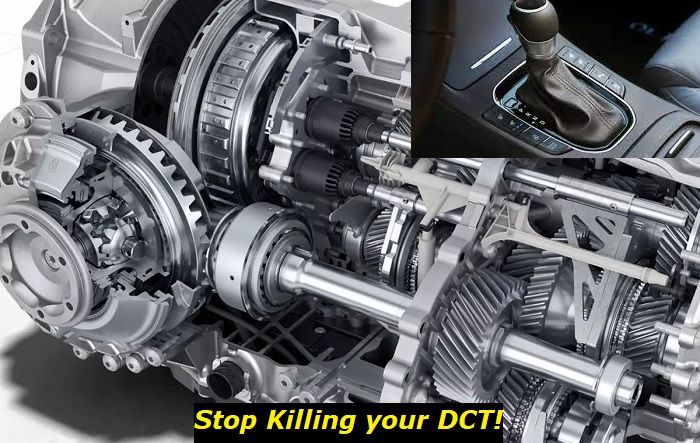Toyota 2KD engine is among the most popular engine choice for several vehicles because of its fuel efficiency and reliable performance both off and on the road. However, just like any other car engine, a 2KD engine can also experience issues, and among the common ones is power loss. We are here to assist you to diagnose and give you simple steps to fix this and have your vehicle running smoothly again.
Key features and my opinion about the engine
- Production years:2001-now
- Average lifespan of 2KD-FTV:190,000-220,000 miles
- Fuel supply type:Common Rail
- Power range:120-142 hp
- Fuel efficiency:good
- Engine block material:cast iron
- Engine reliability score:high
- The most common problems:early models had weak pistons, injection problems, oil consumption, noisy work and vibrations.

What is a Toyota 2KD Engine?
The Toyota 2KD engine is a diesel engine belonging to the KD engine series made by Toyota Corporation in the year 2001. 2KD engine is also known as 2.5 D-4D. It's a 2.5-liter inline 4-cylinder turbo diesel engine. Moreover, Toyota's 2.5L engine is among the KD engine series with a 3.0-liter version - 1KD, although the 2KD engine version is more similar to the earlier 2L engine version.
This engine is used in several light commercial vehicles, SUV models, and pickup trucks, including Hiace, Hilux, Innova, and Fortuner. It's one of the most popular and used engines because of its efficiency, robust performance, and durability.
Toyota 2KD engine features a common rail direct injection engine; hence, the fuel is injected directly into the combustion chamber at high pressure. Thus, you'll have more precise fuel control and advanced fuel efficiency. Furthermore, this engine also features a turbocharger that helps enhance power delivery to all engine speeds.
Toyota 2KD Specifications
Toyota 2KD diesel engine contains a strong cast iron, a crankshaft having 8-balance weights and 5-journals, a deep-skirt cylinder block, pistons from aluminum having Ni-resist cast-iron carriers, and strong connecting rods. This 2KD engine block base has cooling oil jets piston and sprayed oil to the piston's cooling channels.
In addition, the Toyota 2KD engine features an aluminum alloy with a 16-valve cylinder head with a steel-laminate head ring in between the cylinder block and the cylinder head.
At its engine top, there are two-overhead camshafts. This engine utilizes a timing belt made of rubber, that drives the intake camshaft. Every cylinder features two exhaust valves and two intakes and its valvetrain utilizes solid valve lifters.
2KD diesel engine is fitted with D-4D common-rail direct injection. This engine also has a turbocharger with a powered wastegate valve. An air-to-air type intercooler makes 2KD engines more powerful. Its high-pressure fuel pump gives a pressure that can go as higher as 160.
Improvements Made
The Toyota 2KD engine was improved back in 2005. Among the features added is the third generation of the Common Rail System made by the Denso Company. Its new injection system offers a very high injection pressure of 200 MPa. Furthermore, its compression ratio was reduced to 17.4:1 and the engine was fitted with cooled exhaust gas recirculation.
Diagnosing Toyota 2KD Engine Losing Power
To successfully diagnose a 2KD engine that is having power loss issues requires some systematic way of finding the root cause of the problem. Below are common techniques you can use to diagnose a 2KD engine that's losing power.
1) Dashboard Warning Lights
When your car's engine loses its power, the initial thing to do is check the dashboard to see any warning lights. Dashboard lights will give you clues on the possible problems, for instance, a problem with the engine's electronic systems or a malfunctioning sensor.
2) Fuel System
Fuel system faults can easily lead to power loss. Check the fuel injectors, fuel pump, and fuel filter for leaks, clogs, or malfunctions. Fuel injectors supply the fuel to combustion chambers, and if the fuel injector has an issue, it decreases power. To test the fuel injectors, you require a fuel pressure tester to inspect the fuel pressure at the injectors. Low fuel pressure signifies a faulty fuel injector.
3) Compression Test
The compression test checks the pressure in a combustion chamber. The test will determine if there are issues with the 2KD engine's internal components e.g. worn-out or damaged valves/piston rings. Low compression in either of the cylinders leads to power loss. To successfully check a compression, you'll require a compression tester. Attach it to spark plug holes and check the pressure of every cylinder.
4) Mass Air Flow Sensor
The mass air flow sensor tests the quantity of air flowing into the engine. A faulty mass air flow sensor gives the car's engine computer incorrect details on how much air gets to the engine, leading to power loss. To test the mass air flow sensor, you'll require a scan tool that reads mass air flow sensor data and check if the airflow sensor is damaged.
5) Vacuum Leaks
Vacuum leaks also disrupt the air-fuel mixture, affecting the engine performance. Check the vacuum connections and lines to see if there are any damages or leaks.
6) Timing Belt/Chain
Check if your car's engine chain or the timing belt is well-tensioned or worn out. Worn out and improperly tensioned belt affects the engine's timing, leading to decreased performance and power. The timing belt ensures the 2KD engine pistons and valves operate in synchronization. A damaged timing belt leads to engine power loss. You should remove the valve cover to properly check if the timing belt is good.
7) Scan Error Codes
Using an On-Board Diagnostics scanner (OBD-II), check if error codes are stored in your car's computer system. The codes will help determine the specific issues affecting the engine's performance.
8) Exhaust System
A blocked exhaust system restricts the free flow of exhaust fumes, reducing the engine power. With the exhaust system, check if there are leaks, faulty components, or blockages.
9) Air Intake and Filter System
Dirty and clogged air filters prevent the free flow of air to your car's engine, leading to engine power loss. Inspect the air intake system for any debris or dirt blockages that affects air intake. To properly inspect your car's air filter, take it out from the engine and check if there is debris or dirt. Worn-out and dirty air filters should be replaced.
10) Mechanical Issues
Check if there are any issues in any other part of the engine components like the Exhaust Gas Recirculation system, sensors, and Positive Crankcase Ventilation valve since this may have a negative influence on your engine's performance.
11) Turbocharger
If the 2KD diesel engine is fitted with a turbocharger, check maybe there are issues related to the turbo system. Check if there are any damaged components or leaks.
12) Ignition System
A defective ignition system results in power loss and misfires. Check the ignition wires, ignition coils, and spark plugs for any signs of malfunction or wear.
Fixing Toyota 2KD Engine Losing Power
After diagnosis, you need to fix the issue. However, the exact repair needed depends on the main cause of the issue. Repairs of a Toyota 2KD engine losing power are:
- If the issue is with a faulty fuel injector, then replace it
- The defective mass air flow sensor should be replaced
- If experiencing low compression, you should replace or repair the pistons, valves, or rings
- Clogged and dirty air filters should be replaced
- Issues with the chain or timing belt, replace the chain or timing belt.
Tips on How You Can Prevent a 2KD Engine from Power Loss
To prevent power loss in Toyota 2KD engines, they need regular maintenance and good driving habits. Below are some of the tips to keep your engine in proper condition and reduce the probability of having power loss:
- Use Best-Quality Lubricants and Fuel
Use best-quality engine oil and gasoline that satisfies the manufacturer's specifications. Low-quality lubricants and fuel leads to carbon buildup, power loss, and decreased engine efficiency.
- Check Cooling System
Always ensure that the engine cooling system operates well and the coolant level is as required. Overheating of the engine can lead to damage which affects its performance.
- Regular Check the Exhaust System
Ensure that the exhaust system has no blockages or leaks. An exhaust in good condition allows your car's engine to breathe as required.
- Drive Responsibly
Always drive carefully and avoid unnecessary acceleration. Abrupt braking and hard acceleration can also lead to engine stress decreasing fuel efficiency.
- Check Leaks
Frequently check your vehicle for fluid leaks, including coolant and oil leaks. If there are any leaks, address them quickly to prevent any damage to either of the components.
- Check Engine Warning Lights
If the "check engine light" lights on the dashboard, check the issue as quickly as possible. "Check engine light" or any other warning light shows an unattended issue, which can potentially lead to severe damage or power loss.
- Regular Maintenance
Always follow the manufacturer's recommendation about your vehicle's maintenance. This should include frequent oil changes, replacement of air filters, etc. Regularly maintaining the engine and its related systems helps in ensuring ideal performance.
- Properly Warm Up Your Car's Engine
Allow the vehicle engine to warm up before you start driving. Warm-up periods will help your engine reach the required operating temperature, decreasing wear and tear.
- Avoid Overloading
Avoid surpassing the recommended load limit for your vehicle since your engine will strain, which can negatively affect the engine's performance.
- Address Issues Immediately
If there are any slight changes in your car's engine performance, unusual vibrations, or strange noises, take your vehicle to a garage for inspection. Detecting and resolving the issue early prevents them from growing into a more significant problem.
Other Common Issues Related to Toyota 2KD Engine
Apart from the engine losing power, there are other common issues related to the Toyota 2KD engine. These include.
1) Cracked Pistons
Common symptoms of cracked pistons include:
- Engine not starting
- Smoke coming from the engine bay
- Overheating engine
- Piston noise
- Poor engine performance/acceleration
2) Failure of Rail Injector
Common symptoms include:
- Smoke coming from the engine bay
- Check engine light
- Engine unable to start
- Clogged filters
3) High Oil Consumption/Leaks
Common symptoms include:
- Poor engine performance
- Oil puddles collect below the car
- Dark/Blue smoke coming from the engine bay
- A quick drop in the oil level
- Burning oil smell
Conclusion
Diagnosing and fixing a 2KD engine that's losing power needs some systematic approach. Always begin with the most basic inspections and slowly shift to more advanced diagnostics if the problem still exists. Careful driving manners, regular maintenance, and checking issues immediately will prevent power loss and make your engine operate smoothly.
If you aren't familiar with any 2KD engine diagnostics and fixing or don't have the required tools, take your car to a qualified mechanic. They will diagnose the exact issue and make the required repairs. Addressing any engine issues as fast as possible helps prevent further damage, saving you from an expensive repair.
About the authors
The CarAraC research team is composed of seasoned auto mechanics and automotive industry professionals, including individuals with advanced degrees and certifications in their field. Our team members boast prestigious credentials, reflecting their extensive knowledge and skills. These qualifications include: IMI: Institute of the Motor Industry, ASE-Certified Master Automobile Technicians; Coventry University, Graduate of MA in Automotive Journalism; Politecnico di Torino, Italy, MS Automotive Engineering; Ss. Cyril and Methodius University in Skopje, Mechanical University in Skopje; TOC Automotive College; DHA Suffa University, Department of Mechanical Engineering






Add comment